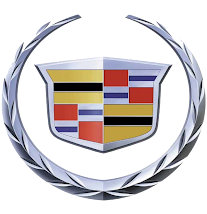---- Specifications ----
| Price | -- | Production | -- | ||
| Engine | 3.6 liter V6 | Weight | -- | ||
| Aspiration | natural | Torque | -- | ||
| HP | 304 hp | HP/Weight | -- | ||
| HP/Liter | 84.4 hp per liter | 1/4 mile | -- | ||
| 0-62 mph | -- | Top Speed | -- |
(from General Motors Press Release) Having earned critical acclaim, industry awards and brisk sales, Cadillac CTS has moved into the vanguard of contemporary design. In doing so, Cadillac designers faced the question of what to do next. Their answer celebrates that design legacy with the exhilarating Cadillac CTS Coupe Concept, which premiered at the 2008 North American International Auto Show.
 1280x960 wallpaper |  1280x960 wallpaper |  1280x960 wallpaper |  1024x768 wallpaper |  1280x960 wallpaper |
 1920x1440 wallpaper |  1920x1440 wallpaper |  1920x1440 wallpaper |  1600x1200 wallpaper |  1920x1440 wallpaper |
The CTS Coupe takes Cadillac’s acclaimed Art and Science design language and adds more of both. More expressive, more technical and very personal, the CTS Coupe extends the dramatic design of its sedan predecessor with all-new sculpted bodywork aft of the front fenders.
“The CTS Coupe Concept is a dramatic design statement,” said Ed Welburn, VP, GM Global Design. “We did not create it as the result of sifting through reams of market data, nor is its shape trimmed to suit the input collected at a consumer clinic – it is emotion on four wheels and the very essence of what defines Cadillac today.”
The CTS Coupe Concept has a classic 2+2 interior layout, highlighted by black leather and microfiber trim that is complemented by yellow ochre-colored seat inserts and leather stitching. It is designed to accommodate a range of engines for the global luxury market, including Cadillac’s popular 3.6L Direct Injection V-6, as well as a new 2.9L turbo-diesel currently in development.
“This Coupe Concept is a natural extension of our design language, and of the CTS itself,” said Jim Taylor, Cadillac general manager. “Very simply, the dramatic design of the sedan begged the question of what it would look like in the unbridled form of a Coupe.”
Generated from the spark of the CTS design team’s imagination, the CTS Coupe casts a profile unlike anything else on the road. Its fast-rake styling – it has the same wheelbase as the CTS, but an overall height that is approximately two inches (51 mm) lower and an overall length that is two inches (51 mm) shorter – blends with hand-sculpted bodywork that bulges around the wheels, giving the vehicle a ready-to-pounce stance that is dramatic, powerful and sleek.
“Just about every decade, Cadillac designs a breakthrough car that becomes synonymous with the brand’s character of the period, such as the 1938 60 Special, the 1959 lineup, the 1975 Seville and the 2003 Sixteen Concept,” said Clay Dean, Cadillac’s global design director. “The CTS Coupe Concept is the next great design, carrying the baton from the Evoq Concept that ushered in the Art and Science era in 1999.”
 1024x768 wallpaper |  1280x960 wallpaper |  1280x960 wallpaper |  1024x768 wallpaper |  1280x960 wallpaper |
 1600x1200 wallpaper |  1920x1440 wallpaper |  1920x1440 wallpaper |  1600x1200 wallpaper |  1920x1440 wallpaper |
A design gem
Among the CTS Coupe Concept’s signature design cues are a number of elements that suggest the look of a carefully cut diamond – particularly at the rear. These elements are seen in everything from the chrome header above the rear license plate holder to the indents that comprise the basic form of the rear fascia.
“The diamond-cut elements enhance the sleek profile of the car,” said John Manoogian II, director of exterior design for Cadillac. “The CTS Coupe uses the elements, along with other nods to classic Cadillac cues – such as vertical headlamps and taillamps – to acknowledge the brand’s heritage without resorting to nostalgia. It is a forward-looking design in every sense of the term.”
Although based on the sedan, the CTS Coupe shares only the instrument panel, console, headlamps, front fenders and grille with the production model. Unique elements include:
-
Classic hardtop styling, with no B-pillar
-
CTS production windshield laid at a faster angle to create a sleeker profile
-
Chrome, split seven-spoke wheel design; 20-inch front wheels and 21-inch rear wheels
-
Sculpted lower front fascia with unique brake-cooling vents
-
Slim-profile outside mirrors
-
XLR-type hidden door handles with proximity remote opening
-
Unique front fender vents
-
Diamond-cut rear fascia with mesh lower grilles and center-outlet exhaust
-
Taillamps with a subtle fin profile and are highlighted with LED lighting technology with light pipes
-
Rear spoiler integrated into the center high-mounted stop lamp
-
Sculpted roof-mounted antenna for OnStar, XM Satellite Radio, etc.
“The clichй is to say that there were no compromises in the design, but that is absolutely accurate in the case of the CTS Coupe,” said Manoogian. “Each line and angle of the bodywork was carefully honed, and the final design’s proportions were judged by the eyes of the design team, not computer-generated math data.”
The surfaces of CTS Coupe Concept are complex, inviting careful inspection. The rear fenders, for example, were sculpted by hand in the design studio until they provided a perfect, muscular form that wrapped tightly over the wheels. At the top, the rear fenders are beveled – owing to the diamond-cut theme – and become part of a horizontal plane that runs from the leading edge of the taillamps and merges into the roof.
“At first glance, the design appears effectively simple, because there are no extraneous moldings, spoilers or other protrusions, but the more you look at it, the more complex it becomes,” said Manoogian. “The angles and bevels were carefully carved to enhance the car’s sleek shape, but aren’t ‘busy’ or distracting – there’s really nothing quite like it.”
 1024x768 wallpaper |  1280x960 wallpaper | |||
 1920x1440 wallpaper |
Personal passenger environment
A classic 2+2 interior environment enhances the CTS Coupe’s personal feel. It shares the hand cut-and-sewn instrument panel and center console with the CTS, but features unique front and rear seats, a continuous console running between the front and rear seats, and custom door panels.
“The CTS Coupe is a personal car – something a customer would choose to reward him or herself – and the passenger environment reflects that,” said Eric Clough, interior design director. “The interior uses the already excellent CTS design and takes it to a new, bolder level.”
Custom-trimmed sport seats from Recaro are located in all four positions. They support the grand-touring nature of the car and are covered in rich, black and suede-like microfiber material, with yellow ochre-colored inserts. The yellow ochre color provides dramatic contrast with the black surrounding trim, but is a subdued hue consistent with the interior’s overall feeling of refinement. Yellow ochre stitching also is used throughout, including the seats, instrument panel, shifter knob and more.
Black microfiber fabric covers the front armrest, as well as an armrest located between the rear seats. The armrests are part of a continuous console that stretches from the instrument panel to rear seats. Carbon-fiber trim accents the console. The interior also features ambient lighting throughout, creating a distinctive environment at night.
Like the sedan, the CTS Coupe Concept’s interior is home to a host of technologies, including a premium Bose audio system, 40-gigabyte hard drive and XM Satellite Radio. OnStar with Turn-by-Turn Navigation enhances the vehicle’s onboard navigation system, which – like the CTS – features a screen that rises out of the center of the instrument panel.
Performance-bred powertrain and suspension systems
As is the case with its design, the CTS Coupe extends the acclaimed capabilities of the sedan in terms of performance technology. This includes the capability to support a broad engine range of gasoline and diesel engines.
The CTS Coupe, of course, ascertains the sedan’s 3.6L V-6 engines, including the 304-horsepower (227 kW) Direct Injection power plant. The Coupe Concept also is designed for a new 2.9L turbo-diesel being developed for international markets. This new engine, tailored for use in the CTS, will deliver an estimated 250 horsepower (184 kW) and 406 lb.-ft. of torque (550 Nm).
A six-speed manual transmission backs the engine, sending torque to an independently sprung rear axle. The CTS Coupe’s sport-tuned suspension gives it a slightly lower ride height than a production CTS – a look enhanced by the car’s rakish shape and large, 20-inch front and 21-inch rear wheels.
Behind the chrome, split-spoke, aluminum alloy wheels is a set of high-performance brakes, featuring cross-drilled rotors. Six-piston calipers clamp down on the front rotors, while four-piston calipers grab the rear rotors. All of the rotors have a distinctive, yellow-painted finish.















